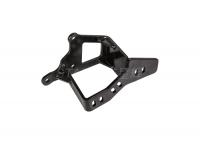Let's talk!
Metal Pressing Process Of Automobile Press Parts
-
It’s no secret that the automotive industry depends heavily on metal — especially once you look “under the hood,” where hundreds of smaller interior components are stamped and machined by manufacturers.
For example, did you know that automotive metal components must be stamped or cold formed to properly restrain a car’s air bags? Or that the inside of your steering wheel included an intricate working of stamped and assembled parts?
Automotive parts manufacturers stamp or cold form metal to produce fasteners, brackets and other components inside the seats, dashboard and steering wheel. These Automobile Press Parts are used in all major areas of motor vehicles:
Braking systems
Steering & suspension
Electrical systems
Exhaust systems
Automotive Parts
Let’s take a look at the process metal stamping engineers work through to take these safety-critical parts from design to completion.
Step 1: Material Selection
Steel also offers a high strength-to-weight ratio, and is extremely recyclable — an important factor as more businesses focus on sustainability.
Substantial growth is predicted for the automotive metal market over the next 6 years, attributed partly to environmental regulations aiming to reduce vehicle emissions. As a result, more OEMs have been utilizing lightweight and cost-effective materials with the same strength requirements.
Metal material suppliers are also learned ways to produce advanced high-strength steel with a steel alloy that’s stronger, less costly and almost as lightweight as aluminum.
Step 2: Part Design and Manufacturing
The automotive industry often requires specific crafted components to withstand extreme temperatures and/or pressures. Take airbags, for example: this critical safety feature in cars can only function if the grommets and brackets are working properly. These reinforcing components prevent fabric tearing or abrasion during Deployment.


